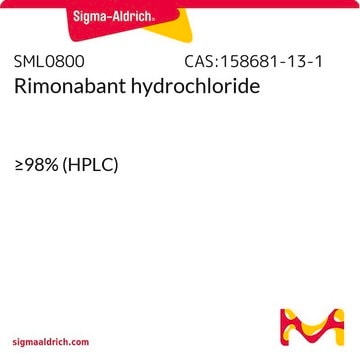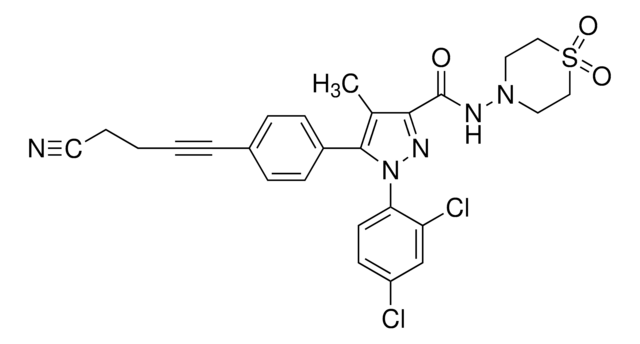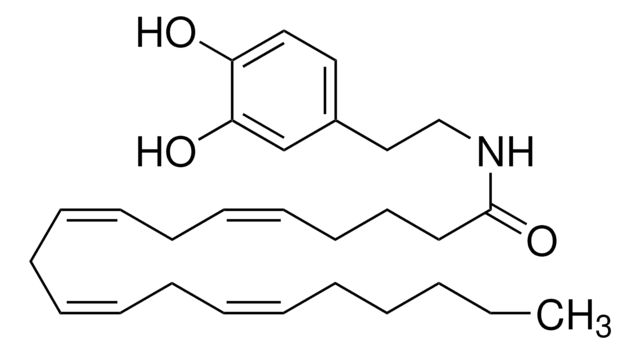A6226
AM251
>98% (HPLC), solid, cannabinoid receptor (CB1) antagonist
Sinonimo/i:
1-(2,4-Dichlorophenyl)-5-(4-iodophenyl)-4-methyl-N-1-piperidinyl-1H-pyrazole-3-carboxamide
About This Item
Prodotti consigliati
Nome del prodotto
AM251, >98% (HPLC), solid
Livello qualitativo
Saggio
>98% (HPLC)
Stato
solid
Colore
white
Solubilità
DMSO: >10 mg/mL
H2O: insoluble
Ideatore
Sanofi Aventis
Stringa SMILE
Cc1c(nn(-c2ccc(Cl)cc2Cl)c1-c3ccc(I)cc3)C(=O)NN4CCCCC4
InChI
1S/C22H21Cl2IN4O/c1-14-20(22(30)27-28-11-3-2-4-12-28)26-29(19-10-7-16(23)13-18(19)24)21(14)15-5-8-17(25)9-6-15/h5-10,13H,2-4,11-12H2,1H3,(H,27,30)
BUZAJRPLUGXRAB-UHFFFAOYSA-N
Informazioni sul gene
mouse ... Cnr1(12801) , Cnr2(12802)
rat ... Cnr1(25248)
Applicazioni
Azioni biochim/fisiol
Caratteristiche e vantaggi
Altre note
Indicazioni di pericolo
Consigli di prudenza
Classi di pericolo
Aquatic Chronic 4
Codice della classe di stoccaggio
11 - Combustible Solids
Classe di pericolosità dell'acqua (WGK)
WGK 3
Punto d’infiammabilità (°F)
Not applicable
Punto d’infiammabilità (°C)
Not applicable
Dispositivi di protezione individuale
dust mask type N95 (US), Eyeshields, Gloves
Scegli una delle versioni più recenti:
Certificati d'analisi (COA)
Non trovi la versione di tuo interesse?
Se hai bisogno di una versione specifica, puoi cercare il certificato tramite il numero di lotto.
Possiedi già questo prodotto?
I documenti relativi ai prodotti acquistati recentemente sono disponibili nell’Archivio dei documenti.
I clienti hanno visto anche
Il team dei nostri ricercatori vanta grande esperienza in tutte le aree della ricerca quali Life Science, scienza dei materiali, sintesi chimica, cromatografia, discipline analitiche, ecc..
Contatta l'Assistenza Tecnica.









